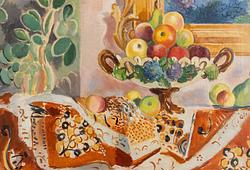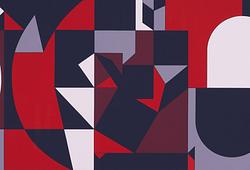Karel Appel
Untitled
Signed Appel. Probably executed in the late 1960s/early 1970s. Canvas 100 x 100 cm. On the stretcher marked in pencil "layla" (likely refers to Piet Moget's daughter).
Provenance
Acquired from Piet Moget.
A life dedicated to art – a private collection of modern Swedish and international art.
More information
When Karel Appel passed away in 2006 at the age of 80, he was honored with major retrospective exhibitions across Europe. His journey, however, had been long—from his early attempts in a war-torn Amsterdam to his international recognition as one of the postwar era’s most original and expressive painters.
Appel studied at the Rijksakademie in Amsterdam during the German occupation and debuted in 1947 with a solo exhibition in Groningen. His first major commission, a mural in Amsterdam’s city hall, met with harsh criticism and was covered for ten years—an early indication of how provocative his colorful, spontaneous style could be. Following this setback, he left the Netherlands for Paris, where he soon connected with like-minded young avant-garde artists.
In 1948, Appel co-founded the groundbreaking Cobra group with Asger Jorn, Constant, Corneille, Christian Dotremont, and Joseph Noiret. The name derived from the members’ home cities—Copenhagen, Brussels, Amsterdam—and became synonymous with a new, free artistic approach. Cobra united painters and poets in a shared pursuit of spontaneity and creative joy, directly opposing the intellectual and geometric abstraction of the time.
Appel’s paintings are defined by intense energy and strong presence. Color is applied thickly, sometimes straight from the tube, and bold brushstrokes give his subjects—often animals, humans, or imaginary creatures—a simultaneously brutal and playful character. As Appel himself explained: “If I paint like a barbarian, it’s because we live in a barbarous age.” His work reflects both aggression and vitality, often softened by a naïve humor.
This painting clearly demonstrates Appel’s mature period in the late 1960s to early 1970s: the colors are vivid yet harmoniously balanced, the surface rich and tactile, and the figures emerge almost plastically from the background. It is a work full of movement, rhythm, and creative joy—a painting where spontaneity and structure coexist.
Artist
Karel Appel was a Netherlandish visual artist, sculptor and ceramic artist born in Amsterdam. Appel studied at Rijksakademie van Beeldende Kunsten in Amsterdam. Appel drew inspirations for his creations from Pablo Picasso and Henri Matisse. During his studies Appel met Beverloo Corneille who he later formed COBRA alongside. His artworks are often vibrant and expressionistic and depict various figures. Appel sculpted with different materials in what is known as the assemblage technique.
Read more







































































